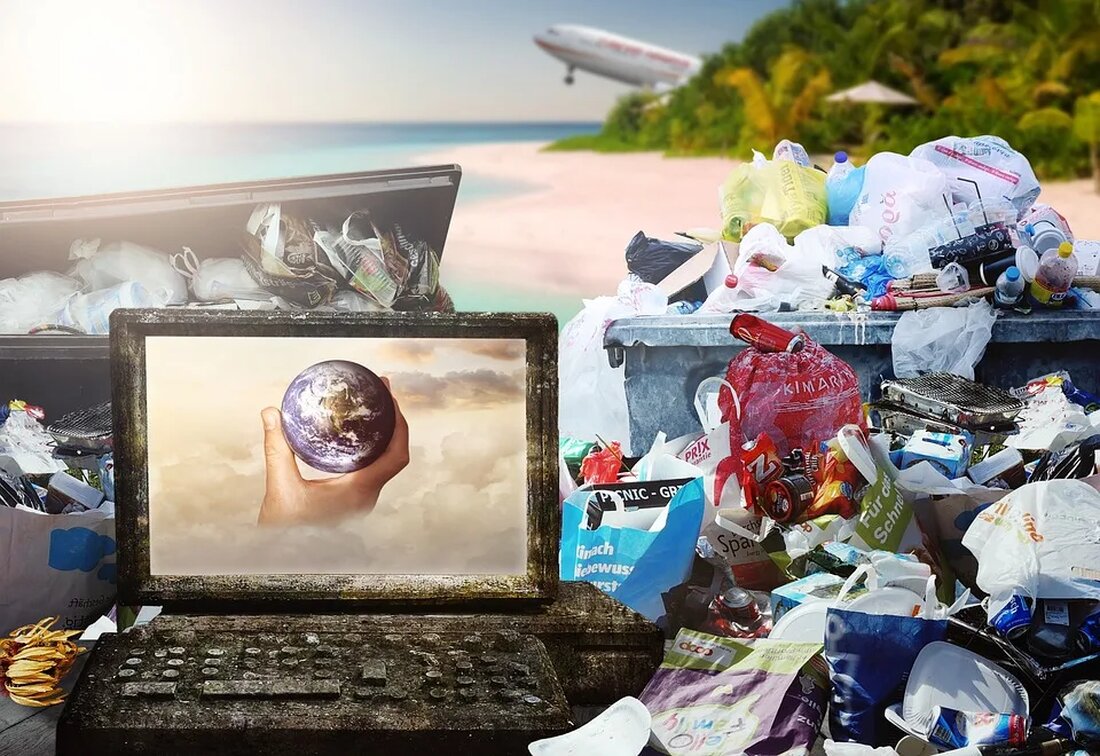Sustainable alternatives to plastic
Plastic is everywhere: in our kitchens, bathrooms, supermarkets and even our clothes. For a cheap, durable and practical material, plastic is hard to beat. But despite its convenience, plastic comes at a high cost to our environment. Every year, millions of tons of plastic waste end up in our oceans and landscapes, harming ecosystems and animal life. Additionally, the resources needed to produce plastic are also unsustainable. There is therefore an urgent need for alternatives to plastic that are more sustainable and environmentally friendly. Bioplastics What are bioplastics? Bioplastics are plastics that are made from renewable raw materials, in contrast...

Sustainable alternatives to plastic
Plastic is everywhere: in our kitchens, bathrooms, supermarkets and even our clothes. For a cheap, durable and practical material, plastic is hard to beat. But despite its convenience, plastic comes at a high cost to our environment. Every year, millions of tons of plastic waste end up in our oceans and landscapes, harming ecosystems and animal life. Additionally, the resources needed to produce plastic are also unsustainable. There is therefore an urgent need for alternatives to plastic that are more sustainable and environmentally friendly.
Bioplastics
What are bioplastics?
Bioplastics are plastics made from renewable raw materials, as opposed to traditional plastics made from petroleum. Some examples of bioplastics include polylactic acid (PLA), polyhydroxyalkanoates (PHA), and starch-based plastics, which are made from plants such as corn, sugarcane, and potatoes.
Advantages of bioplastics
The main advantage of bioplastics is that they are made from renewable resources, helping to reduce dependence on fossil fuels. Some bioplastics are also biodegradable and compostable, meaning they decompose naturally under certain conditions, reducing the amount of plastic waste. In addition, bioplastics can also absorb carbon dioxide (CO2) from the atmosphere, helping to reduce greenhouse gas emissions.
Disadvantages and challenges of bioplastics
Although bioplastics offer many benefits, they also pose some challenges. One of these challenges is that not all bioplastics are biodegradable or compostable. In fact, many bioplastics are designed to be as durable and stable as traditional plastics. Additionally, the degradation of compostable bioplastics requires special conditions that are not present in most commercial composting facilities.
Edible alternatives
Edible packaging
Another interesting alternative to plastic is edible packaging, which is usually made from food such as algae or proteins. These packaging can easily be eaten or composted after the product has been consumed.
Edible cutlery and dishes
In addition, edible cutlery and tableware are also becoming increasingly popular. Such products are usually made from ingredients such as wheat, rice or sorghum and can easily be eaten or composted after use.
Reusable systems
What are reusable systems?
Reusable systems are systems in which packaging can be cleaned and reused after use. These systems can be used in a variety of ways, for example for beverage bottles, food packaging and shopping bags.
Advantages of reusable systems
The advantages of reusable systems are obvious: they reduce the amount of waste, which is a significant problem, and save resources because less new packaging has to be produced. In addition, reusable systems also save energy and water used in the production of disposable packaging.
Challenges in implementing reusable systems
However, implementing reusable systems can be challenging. It requires thorough cleaning of returned packaging to ensure safety and hygiene, which consumes additional resources and energy. An efficient take-back system must also be set up to ensure that packaging is actually returned and reused.
Glass and metal
Another approach to reducing plastic waste is to use longer-lasting materials such as glass and metal that can be reused and recycled.
Glass
Glass is a natural material made from sand, soda and lime. It is fully recyclable and can be reused infinitely without loss of quality.
metal
Metal, especially aluminum, is another high-quality and durable material that can serve as a replacement for plastic. Aluminum can also be recycled infinitely without losing its quality.
conclusion
It is clear that there is no one-size-fits-all solution to replacing plastic. Each alternative has its own advantages and disadvantages and it is often a matter of compromise as to which alternative is best. However, it is important that we actively strive to find more environmentally friendly and sustainable alternatives to plastic. With creative innovations and conscious decisions, we can make a positive contribution to reducing plastic pollution and protecting our valuable natural resources.

 Suche
Suche
 Mein Konto
Mein Konto
